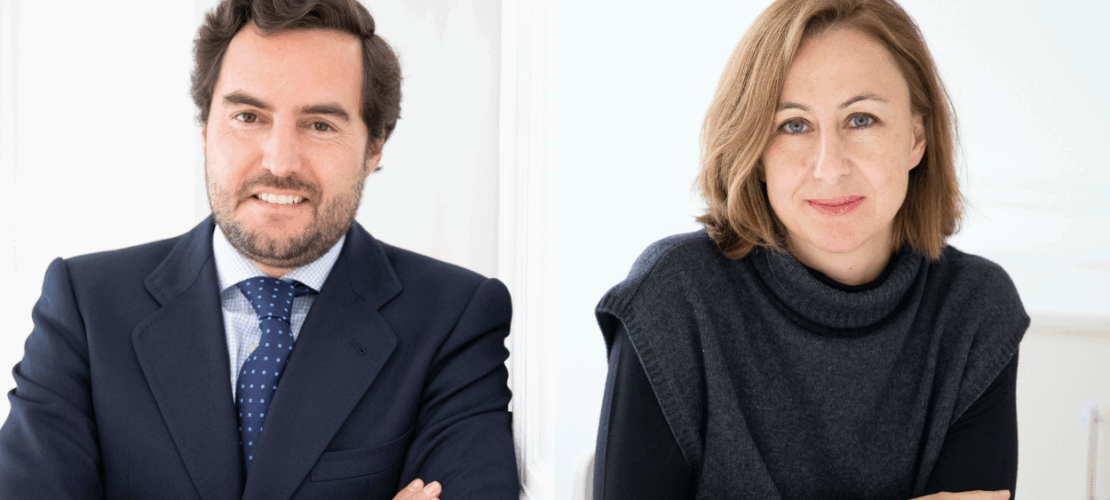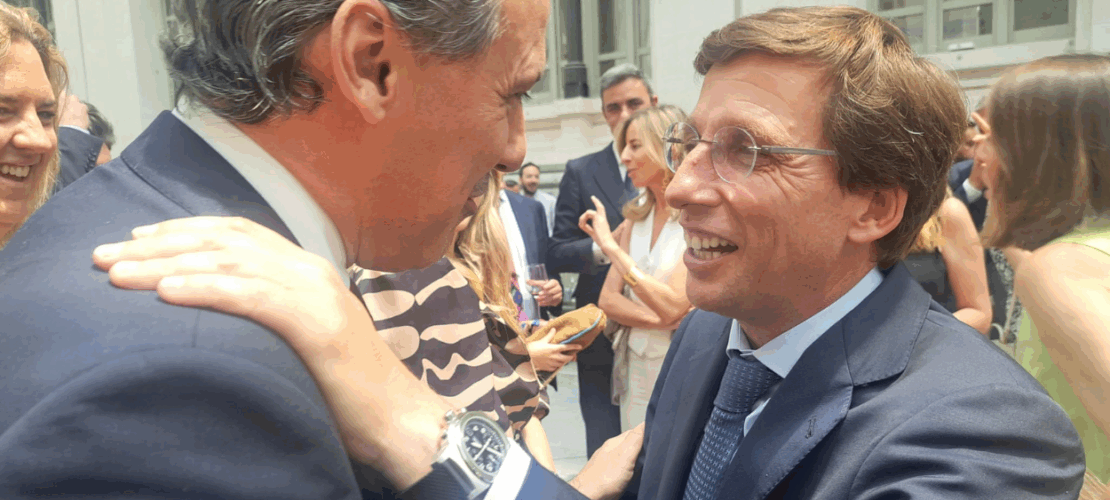Secondary investment funds gain ground as a growth pathway for SMEs
The secondary investment fund market—especially continuation funds focused on single assets—is experiencing strong growth in Spain, positioning itself as a key tool for developing SMEs with growth potential but limited support from current investors. This was the main takeaway from the seminar “The Secondary Market in Spain,” organized by Addleshaw Goddard, featuring experts from CVC, Campbell Lutyens, Portobello Capital, and the European Investment Fund.
From left to right: Emilio Olmos, partner at CVC Secondary Partners; Ana Dicu, managing director at Campbell Lutyens; Juan Luis Ramírez, partner at Portobello Capital; Joaquín Ruiz Tarre, head of Secondaries at the European Investment Fund; and Isabel Rodríguez, Investment Funds partner at Addleshaw Goddard.
The boost that investment in the secondary market in Spain is experiencing is due, to a large extent, to the benefits that this type of continuation structure brings to the different parties involved. In the opinion of Isabel Rodríguez, investment funds partner at Addleshaw Goddard, “one of the main reasons why secondary funds are increasingly being promoted in Spain is because in our market there are a multitude of companies that still have many opportunities to explore in order to continue growing.”
In Spain, secondary funds are mainly focused on mid-market and lower mid-market companies. The managers who are most frequently using this tool are those who have in their portfolios companies that still have many development and growth opportunities, but whose investors are unable to sustain the investment further or to disburse additional capital, and thus provide these companies with the necessary capital to complete the development of their business. This is caused, among other factors, by international uncertainties that are affecting interest rates and slowing down activity in the stock markets.
At the international level, as Ana Dicu, managing director at Campbell Lutyens, pointed out, “despite the exponential growth of the last 2 years, it is estimated that currently the total volume of secondary operations stands at around 2% of the global figure of private asset valuations, which gives a clear picture of the wide margin for growth that these types of operations can develop.” Specifically, and as experts emphasized, this year the global secondary market will stand at around 175 billion dollars, which would represent an increase of more than 28.9 percent compared to the figures obtained in 2024, a record year so far, in which 156 billion dollars were surpassed in this type of transactions.
Regarding the European Union, as Joaquín Ruiz Tarre, Head of Secondaries at the European Investment Fund, pointed out, “the secondary market is very diverse. There are big differences by country. Thus, for example, France, Spain, and Benelux, and to a lesser extent Italy, maintain a good volume of activity in terms of secondary investment funds, while in the states of Eastern Europe there are few operations.”
Benefits of secondary transactions
The extraordinary growth of the continuation or secondary fund market in our country is the result of the special characteristics of this type of operations, which provide different benefits to the parties involved in the transaction, as explained by Isabel Rodríguez and María de Orueta, partners at Addleshaw Goddard.
These investment vehicles acquire stakes in assets or fund portfolios that are in an advanced stage of their investment cycle, “which allows for a liquidity option to be offered to investors, and at the same time, to provide continuity and promote the development of the asset without a change in the management team, and to allow the entry into these new continuation funds of other investors—together with the investors of the existing vehicle who wish to maintain their participation in the asset—capable of assuming the capital necessary for the next phase of growth or consolidation of the company in question,” highlighted Juan Luis Ramírez, partner at Portobello Capital.
In this sense, for Isabel Rodríguez, “secondary vehicles are an integral component in the global management of portfolios to face the need for liquidity and strategic portfolio rebalancing.”
In turn, Emilio Olmos, partner at CVC Secondary Partners, stated in his intervention that “from the point of view of investors who seek liquidity, these types of operations allow them to fulfill their strategic objectives and, in some cases, reduce their exposure to certain assets that have ceased to be attractive for their portfolio.” And he added that “for those who wish to maintain their investment position, they are offered the opportunity to benefit from the potential and development of the next phase of expansion of the asset, participating in the reinvestment process generally with new, more attractive contractual conditions.”
In Spain, the most widely used continuation fund structure is the one that focuses on a single asset, as opposed to investment in a portfolio of assets. This trend offers greater stability for both managers and investors, derived from greater enrichment and sophistication in analyzing the assets by investors, achieving a better understanding of them.
For their part, fund management companies also benefit from this type of operation, offering liquidity to their existing investors while maintaining ownership and management of these companies in order to develop an optimal growth strategy during the next phase of business development of the asset.
All of this means that the increase in secondary operations is producing an increase in competition, especially in SME transactions. This development favors activity in the Spanish investment market with the entry of secondary players, highly specialized even by business sectors, who are energizing the sector and encouraging investment in mature assets that still have significant business development potential.












